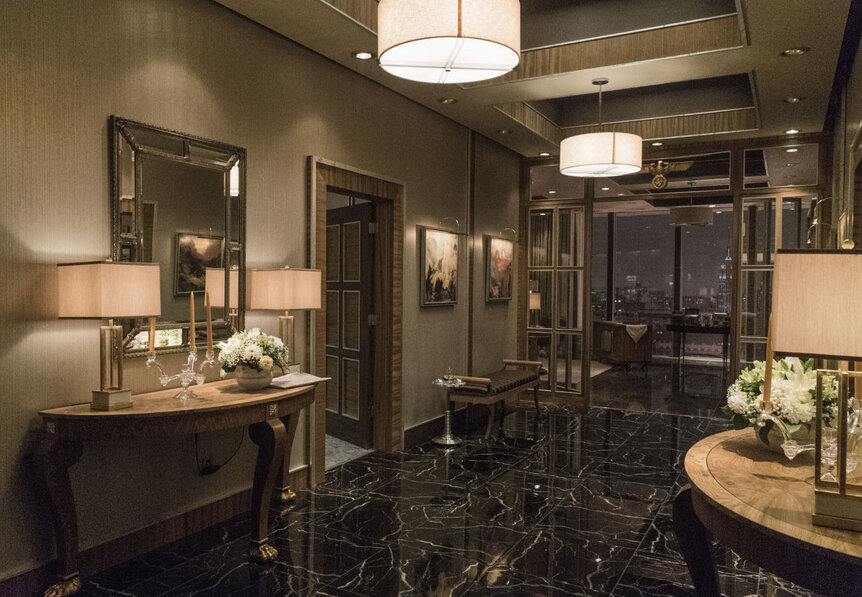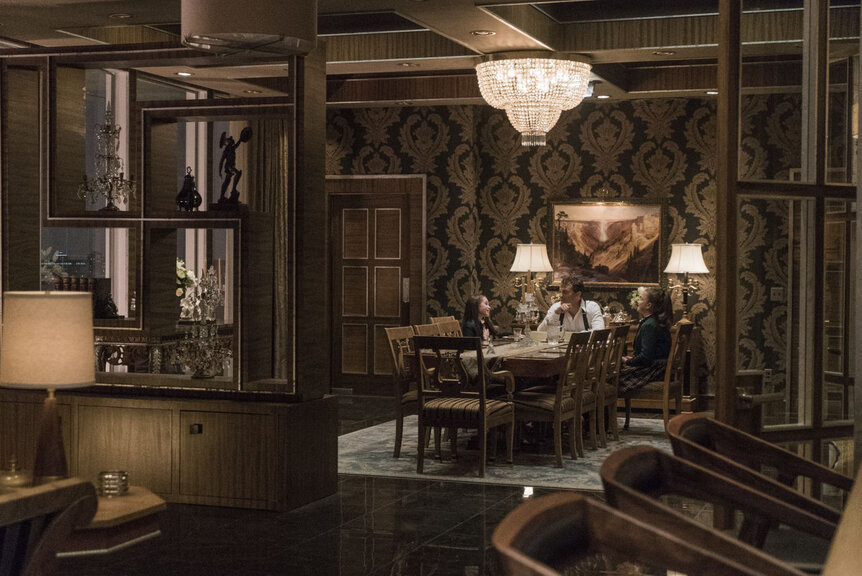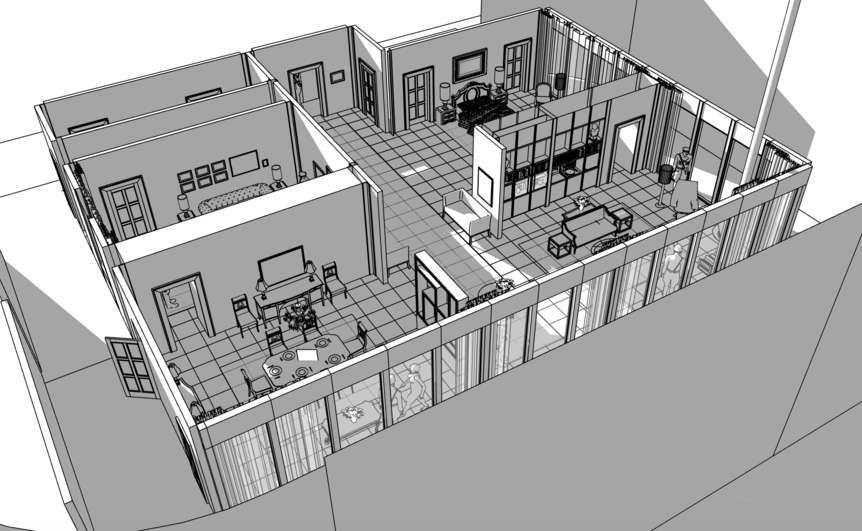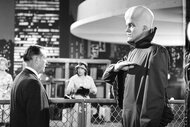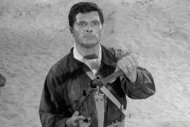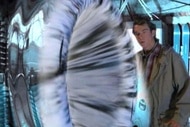Create a free profile to get unlimited access to exclusive videos, sweepstakes, and more!
Emmy Contender: Inside the Kubrick-inspired Nazi penthouse of The Man in the High Castle
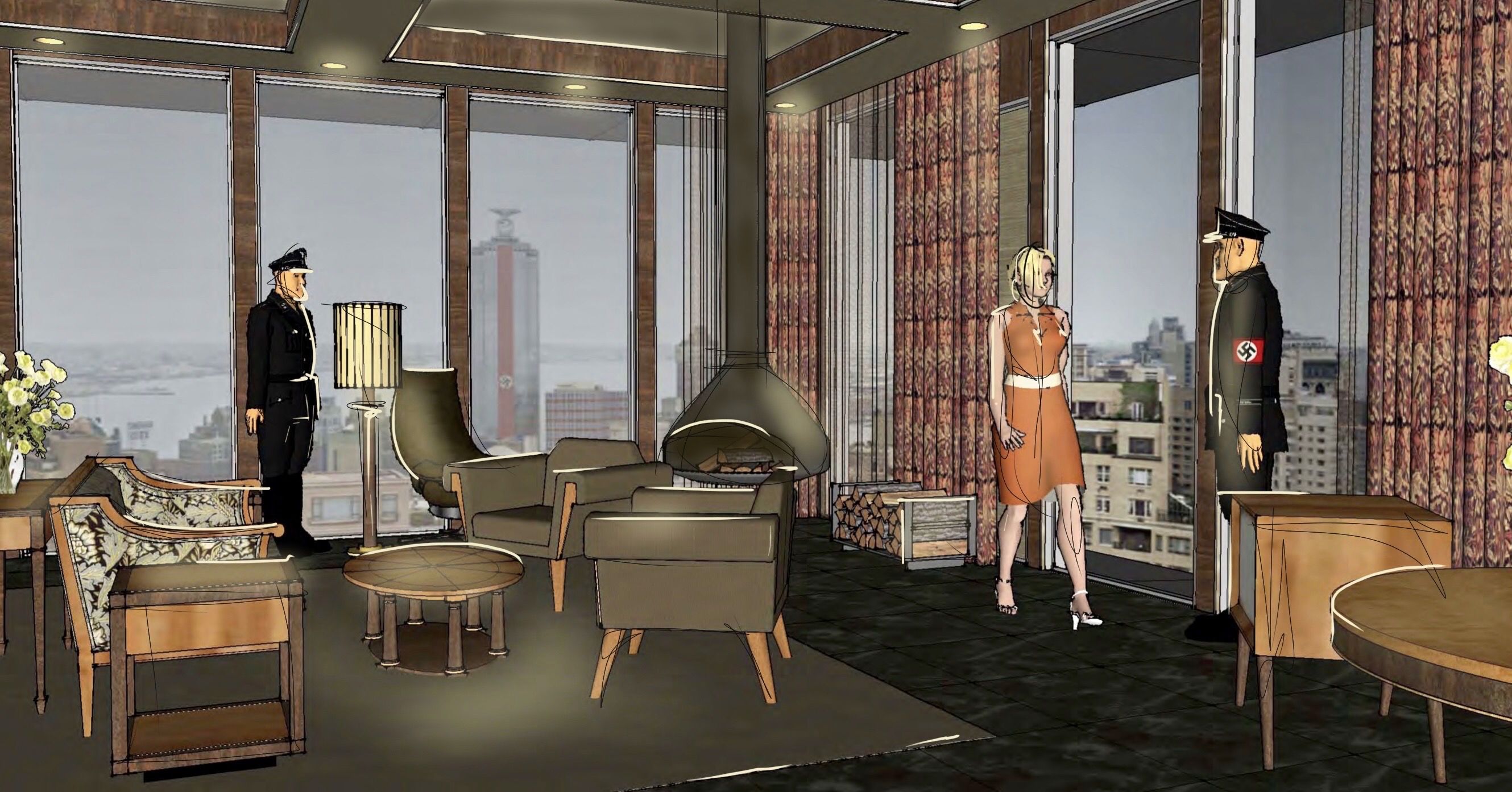
Welcome to Emmy Contenders 2019. This month, SYFY WIRE is speaking to a long list of actors, artists, and artisans whose work earned them Emmy nominations this year. Today we speak with Drew Boughton (production designer), who is nominated for Amazon's The Man in the High Castle.
P.J. O’Rourke, writing about Saddam Hussein’s palace and its massive crystal chandelier, called it “felony interior decorating” – the taste for terrible interior design that so many dictators seem to share. “You can look through historical research and see it,” says production designer Drew Boughton. He’s right: All you need to do is consult historical studies of Napoleon, Lenin, Stalin, Hitler, Mussolini, and Ceausescu – or, to find the info all in one place, a book called Dictator Style: Lifestyles of the World's Most Colorful Despots.
Certain similarities soon emerge. Everything is overscaled, huge. There’s a strong propensity for vulgar gold flourishes, and black-red-and-gold color schemes. Domestic spaces often have the sterile feel of hotel lobbies. You might call all of this Dictator Chic, and it was the inspiration for John Smith’s New York penthouse in The Man in the High Castle.
“The inception of it was that the character is getting a promotion and becoming more like the head of state,” Boughton said. “And we wanted to create an interior that was part home, but also part official business, like the White House.” That meant that Smith’s residence — the architecture, the art, even the view — had to establish Smith’s power, and impress (or intimidate) his guests.
The exterior of the building – which is actually Vancouver’s Guinness Tower – informed the look of the built-from-scratch interior as did the urban neoclassicism of that Albert Speer, Hitler’s architect, created for Nazi Berlin.
Boughton wanted The Man in the High Castle to feel both familiar and strange at the same time -- to mix cultural aspects of both the conquered Americans and the victorious Germans. And so while we know we’re in America, we’re also seeing pre-Hitler Bierstadt paintings and custom-built Biedermeier furniture, as well as black-and-gold wallpaper, silver-leaf trims, and pinstripes that echo the piping on Nazi uniforms. “We basically created a mixture of American modernism with very Germanic cultural influences, to keep everybody’s mind centered on the fact that this is happening here,” said Boughton.
The Smith’s bedroom is the one soft place in the family penthouse, but it, too, is cold and cheerless, a reflection of the deterioration of the Smiths’ marriage. (Check out the wallpaper inspired by sad flower paintings.) Boughton noted that a significant influence on the look of this chamber is the white room in Stanley Kubrick’s 2001: A Space Odyssey, with its ornate baroque furniture and glowing floor. “I always loved that image,” Boughton said. “I always found it mysterious and sad and creepy, and I always wanted to find a way to do something like that.”
The view outside the penthouse, however, might be the address’ creepiest element. Smith’s New York skyline shows us a world in which the United Nations building was never erected. In its space, lording over all of Midtown, is the Nazis’ Reich headquarters, a Brutalist concrete skyscraper crowned with a towering swastika that oddly, is not overbearingly fearsome, as if it had something to prove. “It’s large and it’s present,” Boughton said of this and other swastikas in view, “but it’s emblematic of the casualness of that fascist world, just going about its daily fascist existence.
